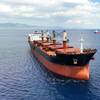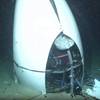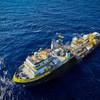AIS: Operator Feedback Analyzed
A common fault was that ships are transmitting inaccurate information such as incorrect heading (which may be due to poorly defined offset data) or inaccurate data pertaining to static, dynamic or voyage information (i.e. being underway whilst AIS signal is indicating being stationary). Mariners are therefore advised not to use AIS information alone for critical decisions such as collision avoidance, and are reminded to check their own transmission data on a routine basis. Another common reported fault is that an MMSI number is displayed in the ‘name’ field for target ships.
Although mariners perceive this as a design fault of the overall system, it is usually a symptom of poor reception due to ‘own ships’ equipment. Mariners should be warned that in this case, other vital information might not be received either, and placement of antenna may be the cause.
Reports of anomalies and operational issues have been encouraged and collected by The Nautical Institute over the past nine months in order to provide useful feedback to the industry. Most seafarers have welcomed AIS stating that it improves positive identification of other vessels and creates better situational awareness.
However, as with most new technologies, some teething problems have occurred and The Nautical Institute has been working with other bodies and the industry to identify and alleviate equipment, procedural and training issues. A summary of the findings is as follows:
Equipment:
After analysis, it was found that many of the reported anomalies were due to poor installation. Common symptoms of poor installation include:
· MMSI numbers being constantly displayed rather than ship’s names which is an indication of poor signal reception. This symptom also implies that other important information is being missed.
· The display of erroneous headings due to the target vessel having had its offset data incorrectly set during installation.
· The abnormal operation of other navigational equipment connected to the AIS.
Vessels whose equipment displays any of these symptoms are urged to examine the quality of the installation.
Procedures:
As with any piece of equipment, the most effective use results from good procedures being put in place. Reports from seafarers indicate that the following issues need to be taken into account.
· When using Minimal Keyboard and Display (MKD) units, thought need to be given as to the placement of the display for effective use, such as its proximity to Radars and VHFs.
· Bridge procedures to state that AIS information alone should not be relied upon for critical operations such as collision avoidance, with a special caution that not all vessels or navigational hazards are fitted with AIS.
· Bridge procedures and bridge team management should encompass the possibility of abnormal operation, or failure of AIS and the impact it might have on navigational safety.
· Procedures should be in place to routinely check the accuracy of own ship’s static, dynamic and voyage related data being transmitted.
· When using MKD graphical display in conjunction with Radar, it is important to use similar orientation (i.e. heads-up, course-up) to avoid confusion.
Training:
AIS is a complex communications/navigation subsystem that is not self-evident in concept nor in use. Training for the use and operation of AIS needs to be addressed and should not be left to installation engineers or technical manuals. Formal training courses are available and the IMO is due to publish an AIS model course in the near future.










